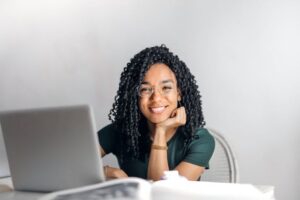Executive Summary
Budgeting entails enacting predetermined targets into effect, disclosing substantive performance outcomes, and assessing performance against predetermined objectives. A line-item budget is one in which the specific financial statement elements are classified according to category. Similarly, program budgeting is where budget information and decisions are structured according to government objectives for a specific project or program with all expenses and revenues factored. On the other hand, a performance budget represents the fund input and public services production by the government. As observed, fiscal policy is the adoption of government income acquisition and spending to affect a country’s economy. Each government must regularly determine how much it needs to spend, what it needs to spend on, and how to fund its spending through fiscal policy, with the budget as the key fiscal policy instrument. Markedly, the budgetary process has long been seen by political scientists as the richest source of evidence on topics such as what is responsible for the success or failure of governmental programs? Who makes the decisions on our country’s priorities? Persons, institutions, associations, and groups of citizens who have direct or indirect involvement in the budgeting process at any or all levels of the governance system and activities are referred to as stakeholders. With limited resources and a rising understanding of government corruption and inefficiency, there was a corresponding need to strengthen the government’s fiscal governance domestically. Although each year and each jurisdiction has its own specific political and cultural context, budgeting is fundamentally a universal and essential practice.

Impact of Structural and Procedural Changes of Public Budgeting Reforms
A budget is a financial plan that indicates how resources will be obtained, distributed, and used for a given period in terms of revenue and expenditure (Heinle et al., 2014). Budgeting entails enacting predetermined targets into effect, disclosing substantive performance outcomes, and assessing performance against predetermined objectives.
Impact of Line Item Budgeting on the budgetary process
A line-item budget is when the specific financial statement elements are classified according to category (Ibrahim, 2013). The relation between the financial data for the prior accounting or budgeting cycles and the projected data for the present or future periods is shown. The line-item format allows allocating funds for personnel, equipment, materials, services, and other required items associated with individual accounts and compares budgeted sums to actual expenditures.
The line-item budgeting system is essentially an expenditure-control method (Sandalgaard & Bukh, 2014). Since this technique originated as a response to corruption and not an interest in government effectiveness, the technique is considered to be a device for management control. An allocation of resources is made to a department, office, or subdivisions of a department or office. As mentioned above, this strategy focuses on managing spending and sufficient expenditure of resources, so it only views the organizational system’s input without much interest in the production or work done as funds resources are distributed based on departmental structure lines and spending line-item categories.
Notably, the operations that make up the historical pool or line elements are not only necessary for the entity’s current vision but must be maintained over the forthcoming budget period (Sandalgaard & Bukh, 2014). This strategy also implies that current operations are being carried out economically and optimally and will continue to be cost-effective in the coming fiscal year.
Effect of Program Budgeting on the budgetary process
Program budgeting is where budget information and decisions are structured according to government objectives for a specific project or program with all expenses and revenues factored (Ibrahim, 2013). In practice, the budgeting approach varies from conventional budgeting, emphasizing the program’s successful attainment rather than reducing costs. The program-based budgeting will result from the program’s goals. In a community project, a community initiative or event will measure the program’s services’ productive output. As a consequence, a consistent description of the program goals would be crucial to its assessment.
With regards to the use of the word program budget, there is a great deal of uncertainty. Some writers differentiate between the terms budget and program budget performance since the Hoover Commission first used the term performance budget in 1949. The Hoover Commission Task Force later used the term program budget (Ibrahim, 2013). Budget officials and economists consider program budgeting predominantly as a mechanism that optimizes resource distribution decisions. Simultaneously, public administration or accounting-oriented leaders and scholars view it specifically as a vehicle for making public sector performance management functionality.
Effect of Performance Budgeting on the budgetary process
A performance budget represents the fund input and public services production by the government (Kelly, 2015). The aim is to define and rate relative performance for defined outcomes based on target achievement. Government entities use this form of a budget to display the correlation between taxpayer’s money and the results of services rendered by federal, state, or local governments. It is a budgetary approach focused on the government’s tasks and activities in executing its policies. It was established because the line item budget method contained little details about program priorities or achievements and was ineffective for comparing expenses to public achievements or making resource distribution decisions (Ibrahim, 2013). Reformers believed that by using this budgeting method, program administrators, department leaders, elected officials, and residents would assess government operations costs.
Effect of Economic, Political, and Social Restraints on the Budgetary Process
Impact of the Fiscal Policies
The word public policy may refer to government-created and implemented policies to achieve particular objectives (Natchez & Bupp, 1973). Fiscal policy is the adoption of government income acquisition and spending to affect a country’s economy. To obtain a proper perspective on the various facets of budgeting, an understanding of fiscal policy is essential. Budgeting strategies and processes are being tweaked to meet the changing needs of fiscal policy. To fund its budget, every government levies taxes. Each government must regularly determine how much it needs to spend, what it needs to spend on, and how to fund its spending through fiscal policy, with the budget as the key fiscal policy instrument (Sandalgaard & Bukh, 2014). An expansionary fiscal strategy raises the federal budget deficit or decreases the surplus because it increases government expenditures or reduces revenues (Natchez & Bupp, 1973). A contractionary strategy would lower the deficit or raise the surplus.
Impact of the Political Factors
It can be explained by rational choice theory, which adopts microeconomic theory principles to analyze and explain political behavior (Gibran and Sekwat, 2009). Voters and political parties serve as objective decision-makers who are seeking to optimize their preferences to be achieved. Parties devised proposals that would earn them the most votes, and voters wanted to realize as much of their desires as possible by government intervention. Policymakers are obliged to define all of the current value preferences of a community using cost-benefit analysis. They then give each value a relative weight, resulting in discovering all possible policies for achieving these values (Natchez & Bupp, 1973). They can recognize all the costs and consequences of each alternative policy and choose the best alternative, which is also the most effective in terms of costs and benefits.
As the twentieth century began, American policymakers were shocked to see the federal government’s activities and expenses increase. With limited resources and a rising understanding of government corruption and inefficiency, there was a corresponding need to strengthen its fiscal governance (Ibrahim, 2013). Policymakers agreed that while government finances had to be put on a balanced perspective, there were very few technological resources and government management institutions. These concerns triggered a concerted effort to build public financial management resources on a more solid footing. Based on the normative budgetary theory, practical advice reformers issued budgeting and accounting reforms promoted by a government theory and how budgeting relates to the state.
The empirical and administrative leadership movements influenced the political and ideological powers contributing to the 1921 Budgeting and Accounting Act (Ibrahim, 2013). The method of budgeting that emerged from the Act centered on regulation and was instrumental. The line-item budget divided government spending into individual items, giving the government the best chance of reducing expenses and increasing productivity.
Markedly, the budgetary process has long been seen by political scientists as the richest source of evidence on topics such as what is responsible for the success or failure of governmental programs? Who makes the decisions on our country’s priorities? (Sandalgaard & Bukh, 2014). The presumption has been that the budgetary process represents the priorities and conflicts contributing to specific projects being prioritized over others.
Impact of Major Impacts of Stakeholders
Persons, institutions, associations, and groups of citizens who have direct or indirect involvement in the budgeting process at any or all levels of the governance system and activities are referred to as stakeholders.
Impact of Internal Stakeholders
Internal stakeholders have a vested interest in the organization’s performance. They include employees, associations, suppliers, regulatory authorities, owners, community members, and those who depend on or represent the organization (Heinle et al., 2014). Approval of the Budget and its execution is needed if the budget is a constraint. At the community level, members will let everyone know about the mechanism involved and what compromises were made in the final budget. It is essential to recognize that people and teams behave disparately in diverse conditions.
The effect stakeholders can have on agency policy, plan of action, and programs rely on their connection to either the agency or the matter of concern. According to Heinle et al. (2014) managers should recognize and earnestly observe all rightful stakeholders’ issues and should treat their concerns suitably into consideration during resolution.
Impact of External Stakeholders
In government organizations, the main external stakeholder is the general public, other stakeholders being suppliers and civil society and interest groups, and other government agencies (Heinle et al., 2014). In several cases, participation in the budget process has been considered one of the fundamental rights at the heart of democratic governance and human development. Policy networks, civic involvement or group engagement projects, and stakeholder engagement efforts are some of the main engagement approaches used by public organizations.
These budgets reflect financial strategies that determine how public resources will be used to achieve policy objectives. To understand the budget process at the regional and local levels, a basic understanding of the processes and timelines for preparing the budget at the federal level is necessary. Similarly, the number of stakeholder participants and the degree to which stakeholders take advantage of opportunities to engage in governance processes influence the budgeting process regarding accountability, transparency, sustainability, and service delivery (Heinle et al., 2014). Accountability mechanisms are necessary to check that governments are meeting their obligations, with one such mechanism being budget transparency.
Analysis of the function of Public Budgeting in Managing Public Sector Organizations Applying Historical and Theoretical Assumptions and Their Impact Domestically and Internationally
Domestically
We need a budgeting hypothesis that will help us clarify government budgeting’s reality to understand how, where, and why governments budget before comprehending what public budgeting is. As the twentieth century began, American policymakers were shocked to see the federal government’s activities and expenses proliferate (Caiden, 1994). With limited resources and a rising understanding of government corruption and inefficiency, there was a corresponding need to strengthen the government’s fiscal governance. Policymakers agreed that while government finances had to be put on a balanced perspective. Based on the normative budgetary theory, practical advice reformers issued budgeting and accounting reforms promoted by a government approach and how budgeting relates to the state.
Over time, perspectives on the need for a public budget have differed. Before the twentieth century, the primary motivation for early budget implementation was regulating government expenditure and taxation (Caiden, 1994). Many economists have regarded the public budget as a statutory governmental tool and as a tool for political, monetary, accounting, and control reasons in the public sector. The budget has since been analyzed from the perspective of a range of disciplines.
Markedly, these concerns triggered a concerted effort to build resources for putting public financial management on a more solid footing. During this era, theorists started to concentrate on administrative rationality to approach the public management task. It resulted in the Budgeting and Accounting Act of 1921, which established a robust and centralized executive management style (Caiden, 1994). As a result, the budgeting system that followed was mainly concerned with regulation and was instrumental. For instance, the line-item budget broke down government spending into individual items that seemed to give the government the best chance of reducing expenses and increasing efficiency. Markedly, centralized, top-down management was required for fiscal discipline, so the line item budget was established as an executive or top-down budgeting tool.
The positivist trend in public administration and budgeting theory contributed to the belief that the administration’s goal should be efficiency (Caiden, 1994). It became clear that the line item budget approach generated no information about program priorities or success. It was insufficient to link expenses to public successes that allowed performance budgeting to be adopted. This budgeting strategy is focused on the roles and tasks that the government conducts to carry out its policies. It was built on the premise that the government needed to keep costs under control to raise operational efficiency.
Performance budgeting maintained the theory’s emphasis on meeting these goals while paying very little attention to the larger framework in which budgeting occurs (Ibrahim, 2013). It also eliminated the habits associated with budgeting from consideration. The national government reinstated program budgeting in place of performance budgeting. The idea that budgetary resolutions should be focused on governmental operations’ priorities or outcomes relative to the contributions to government products’ development was based on this new budgeting approach.
Internationally
Although each year and each jurisdiction has its own specific political and cultural context, budgeting is fundamentally a universal and essential practice (Ibrahim, 2013). Budgeting is part of a broader research agenda as a viable science of human behavior, which essentially allows for predicting outcomes and the comparative study of government policy in various areas of the world. Markedly, theory validation involves research in multiple contexts of hypotheses. Making comparisons, building classifications, and accounting for similarities and variations in drawing a universal hypothesis regarding budgetary actions are all part of understanding the range of budgetary behavior.
Any shortcomings in public budget theory can be traced back to its inability to describe public budgeting theory’s principles and structures in a straightforward and structured way (Rubin, 1990). Through maintaining the conventional concern regarding organizational role and structure, modern structuralists tried to bridge the gulf between structure and behavior. At the same time, they acknowledged that organizations are highly diverse and that structure is not always associated with formal bureaucracy.
In a cross-comparison between the budgeting behaviors between different countries, both the rich and the poor, the generally structured budgeting routines seemed similar to incrementalism. The practice of incrementalism involves basing this year’s budget on the previous years and adding a percentage rise. The numerous economic and social contexts, however, changed how decisions were taken. For instance, developing countries’ budget systems were marked by disjointed budgets generated during the year. Similarly, the budget cycle deteriorated into a vicious circle when one group of participants routinely tried to pass on its vulnerabilities to another to the whole’s disadvantage (Rubin, 1990). The interplay of two factors, poverty and instability, which were sufficiently strong to overwhelm politics and governance issues, seemed to have a critical effect on budgetary decision-making.
The above trends can be supported by the descriptive theory of budgeting, which entails close observations on participation in public sector activities (Gibran and Sekwat, 2009). As a result of this, trends, the sequence of events, and inferences of causes are with local variations and uniformities across cases being paid attention. However, it is essential to note that the connection between budget hypothesis and practice has been diverse depending on the type of theory being reviewed. According to the normative theory, the budget approach has been generally successful than imagined setting attractive goals that guide behavior (Rubin, 1990). However, from a descriptive theory perspective, the budget theory has been weak and unable to theorize phenomena’ meaning.
-
What is budgeting and why is it essential to fiscal governance?,
-
How do line-item program and performance budgeting affect the budgetary process?,
-
How do fiscal political and social factors constrain or shape public budgeting?,
-
What role do internal and external stakeholders play in the budgeting process?,
-
How do historical and theoretical perspectives explain the role of public budgeting domestically and internationally?
References
Anyebe, A. A. (2018). An overview of approaches to the study of public policy. e-Bangi, 15(1).
Caiden, N. (1994). Budgeting in Historical and Comparative Perspective. Public Budgeting & Finance, 14(1), 44-57. https://doi.org/10.1111/1540-5850.00997
Gibran, J.M. and Sekwat, A. (2009), Continuing the Search for A Theory of Public Budgeting. Journal of Public Budgeting, Accounting & Financial Management, Vol. 21 No. 4, pp. 617-644. https://doi.org/10.1108/JPBAFM-21-04-2009-B005
Heinle, M. S., Ross, N., & Saouma, R. E. (2014). A theory of participative budgeting. The Accounting Review, 89(3), 1025-1050.
Ibrahim, M. (2013). Comparative Budgetary Approaches in Public Organizations. Research Journal of Finance and Accounting, 4(15), 88-98.
Kelly, J. M. (2015). Performance budgeting for state and local government. Me Sharpe.
Natchez, P., & Bupp, I. (1973). Policy and Priority in the Budgetary Process. The American Political Science Review, 67(3), 951-963. https://doi.org/10.2307/1958637
Rubin, I. S. (1990). Budget Theory and Budget Practice: How Good the Fit?
Public Administration Review, v50 n2 p179-89
Sandalgaard, N., & Bukh, P. N. (2014). Beyond Budgeting and Change: a case study. Journal of Accounting & Organizational Change.






